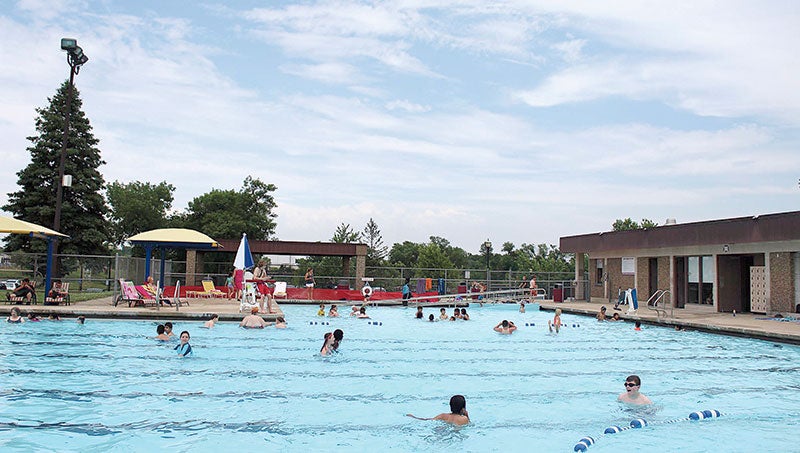Mayor candidate Q&A: Looking at Austin housing
Published 7:01 am Wednesday, July 22, 2020

- King, Heimer and Austin.
|
Getting your Trinity Audio player ready...
|
Author’s note: As the August primary election approaches, the Herald will run three Q&A features of questions submitted to Austin mayoral candidates Jeff Austin, Brian Heimer and Steve King. This first feature focuses on housing in Austin.
Here are their responses.
1. How would you describe the overall housing situation in Austin?
Austin: I would say the overall housing situation in Austin is fair, but improving. We have had a few single-family spec homes built through the Tax Abatement Program along with the Fox Pointe Townhouses and the Flats on 21st, which is a good start, but there is still a need for more. Obviously, we are in a situation where the demand far outweighs the supply.
Heimer: It is tight, meaning if you’re looking for a home, you’re not the only one, and if you bid on one, you again are not alone. But what a great opportunity; the demand is here, we just need to create incentives for builders and reinforce that we need more single family dwellings, not townhomes and apartments. The great American dream is founded on the ability to own a home one day and start a family. Let our leadership and community reflect our desire for single family homes through our decisions on what to allow to be built in the community.
King: I would assess the current housing situation in Austin as healthy, yet aging with a need for continued growth. A quarter of Austin’s housing was built prior to 1940. For comparison sake, 18 percent of all houses built in the state of Minnesota were built prior to 1940. According to our 2017 housing study, Austin has a 3-5 percent vacancy rate, which is considered healthy and one where rental property is readily available. With 68 percent of properties being owner occupied and 32 percent rental, this seems to also be a healthy balance. There certainly continues to be a need for additional housing in Austin as we have 5,500 people commuting into Austin for employment. Perhaps if we had greater availability of housing stock those commuters might choose Austin as a place to live as well as work.
2. Do you believe the Housing Tax Abatement has been beneficial to the city? Why or why not?
Austin: I do believe this program has been beneficial to the city. We (the Council) have approved 43 projects since this program began almost five years ago. While that is not a great surge in new buildings, we have seen several spec projects as part of this program, including the Flats on 21st, an 82-unit apartment complex. These I would consider projects that would not have been built without the abatement program and thus would be positive “plus” projects that we need to help fill our housing gap.
Heimer: Yes and No. Yes in the fact that there were houses built using the program. Now, would those houses have gotten built without the abatement? Maybe, maybe not. The problem for me is that taxes are like water, they flow, so if one area is above another area, they get wet. Like water, the tax burden flows down to the other areas. Just like the residents that have been here, supporting the economy, schools, and businesses, are punished for staying in their homes. I propose under my “Stay and Play” initiative to keep the current tax abatement for five years to help spur new housing; however, then we reinitialize it at the end of the mortgage period or a predetermined extended period, maybe 10,15, or 20 years, to reward those who have stayed and committed to our communities.
King: I firmly believe our Housing Tax Abatement program drafted in 2015 has been beneficial. In the years just prior to enacting this program, the city of Austin had completely anemic housing starts at about 2-3 per year. For the five years since inception, we have approved 43 properties that have qualified into our tax abatement program. One of these properties is an 82-unit apartment complex to be occupied soon, with 40-plus of these apartment units already spoken for. The tax abatement program is a tool that the city has used to be competitive in drawing new construction housing to Austin. This initiative allows for five years of abatement on property taxes for qualifying properties. The benefit to the city is after the short 5-year abatement, we now collect 80 years or more of property taxes on that property. The more property on the property tax rolls, the less property tax levied on all of our property owners. Additionally, this program is a benefit to prospective home buyers when the folks building are freeing up their existing home to continue to add to available houses on the market.
3. Given the uncertainty of the amount of Local Government Aid the city will receive over the next few years, should the city continue to fund the housing initiative at the same rate, a reduced rate, or not at all? Why?
Austin: We do not know for sure what will happen with LGA because of the deficit the State is facing due to COVID-19. However, the mayor did appoint a Budget Committee to address the budget for 2021 based on concerns voiced by the citizens. It was the recommendation of the Budget Committee to not fund the housing initiative at all in 2021, and possibly in 2022 and 2023. I am supportive of this recommendation. There is approximately $900,000 in this fund to use for projects and we also have other tools and the ability to draw upon other funds to supplement this if a worthy project were to present itself. We have been fortunate that recent projects have been able to be built using other tools, such as the Housing Tax Abatement program, leaving this money available.
Heimer: Government involvement in any industry or sector of the economy traditionally leads to overpriced programs and underutilized resources. Economies to me are like a Rubik’s cube. We need to line up each part to make it work. This color represents housing, this color represents jobs, this color is government rules and regulations, and so on. We need to focus on growth, and within my proposed “Stay and Play” model, we create economic partnerships with business organizations that already exist within our community, such as the Bruins, to help pump up all sectors of our economy, including housing. The same model can be played out with swimming at the YMCA, or the Community Pool, or soccer at Packer Arena. We already have all the pieces of the cube, we just need to be a dynamic forward-looking community to find the next opportunity to succeed and not be the next community to cut back on the resources that make us who we are. We just need a leader with vision and the leadership to move us forward, which I bring to the table.
King: Local Government Aid (LGA) is money that is distributed to cities in Minnesota based on a formula. LGA was conceived by the state legislature in the 1970s or 80s as a way to equalize communities that do not have the tax capacity of some of the more populated areas of Minnesota who can draw from a larger tax base. Currently, LGA accounts for about half of Austin’s budget. We currently receive about $8 million in LGA. As the State Legislature tries to fill the financial hole in the wake of our current pandemic, LGA is something that most likely will be reduced. If reduced, our budgeted $200,000 we put into our housing fund each year will be jeopardized. I am a proponent of continuing to fund our housing initiative; however, in the crisis situation that we all find ourselves in, I am willing to hold back funding until we have rebounded. I say this knowing that while we are always in need of more housing, we have just added an 82-unit market rate apartment complex to our city. This new apartment complex, coupled with some other multiple housing options potentially coming soon, allows us the benefit of time.
4. What steps should the city take to meet the demand for housing as indicated in the city’s most recent housing study?
Austin: I think we have taken the steps to address the housing situation in town and continue to walk the talk with housing. Having done the housing study and updating it regularly keeps us on task and helps us identify our successes and where we still need to put our efforts. City Administrator Craig Clark is regularly active in addressing housing needs and keeping Council apprised of potential projects. We need to be open to, and creative in our approach, with new projects.
Heimer: The housing study addressed certain issues, most importantly the access to entry level homes. For me, I have personally seen that with a little inquiry, creativity and inclusion, there are homes here already, we just need a way to get people into them. There are several other ways besides the traditional way of a realtor to acquire a home. You can do a transfer of deed or title, commonly done between family members. You can do a short sale where you contact a lender, then purchase from that lender under the market value. You can go to the County or City tax sales and get a property on tax lien. The City simply needs to step back, create incentives to not only move here, but “Stay here and play.” By creating a climate that lets businesses move into the community to help grow the income base, the need will trickle down into the other sectors of the economy.
King: According to our most recent 2017 study, we see a forecasted need of 207 market rate rental units, 53 affordable units, 86 subsidized units, 119 for-sale single family houses, and 67 for-sale market family housing. This is the perceived need in housing until 2025. Obviously it’s a reach to think the city can accommodate completely this forecasted need, but we are on the right path to ensure housing growth. I will continue to endorse initiatives to incentivize developers to build and expand housing in Austin. Continuing our property tax abatement program is a start to ensure progress in this area. Our housing study is a roadmap with which to follow and find creative ways to entice builders to construct in Austin.
5. Anything else you want to add?
Austin: I do not think we can talk about housing without mentioning the work that has been done with rental properties. Our rental housing ordinance is working to make sure our rental properties are maintained properly and safely. Ensuring that both renters and landlords are protected is especially important. I also believe looking at finding or creating a program or programs that can help homeowners with the maintenance of their properties is vital as well. Often they realize they need to have work done on their homes, but do not always have the financial wherewithal or even have a clue as to how to get it done or who to turn to. Creating a database of contractors and their specialties could be a start. We could also look at a way to provide the financial assistance needed, either through a revolving fund or other grant or loan opportunities, by partnering with others such as the Austin Housing and Redevelopment Authority, State agencies, or even local financial institutions.
Heimer: Like it or not we have a choice, and the choice is ours to make. All we have to do is get out and vote. Like me, or like the other guy, but never pass up the opportunity to vote for your leaders and your future.
King: Housing is a key element to improve the quality of life. It is also the key cog in building tax base through property taxes as well as an economic driver. Assuring available housing stock is one of the first boxes to be checked when a potential business is looking to locate or expand in a community. I will continue to search for ways to rehabilitate our existing housing as well as continue to incentivize ways to facilitate new construction.




